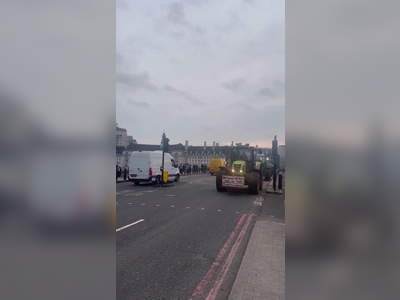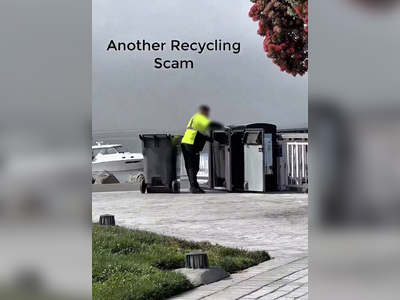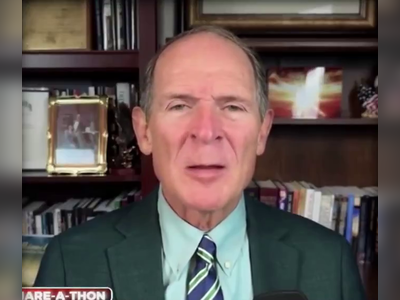The developing of COVID in U.S. – younger patients, more cases, fewer deaths
For weeks now, the coronavirus headlines have been getting grimmer. “Florida, Texas and Arizona all set records for the most cases they have reported in a single day,” read a typical New York Times alert on Wednesday. Thursday’s stories will probably sound even worse.
But while the bad news about rising infection numbers across the Sun Belt is a real and troubling sign of increasing spread — and not a mirage produced by more testing, as President Trump and his allies have falsely claimed — it has also obscured some not-so-bad news about the current contours of the U.S. epidemic.
Yes, case counts are climbing in more than 20 states. But COVID-19 death counts have not been climbing along with them.
Since the start of June, America’s seven-day rolling average of new daily coronavirus cases has plateaued at around 20,000. Yet at the same time the seven-day average of daily coronavirus deaths has fallen by 23 percent — from 952 on June 1 to 731 on June 16.
This disconnect between cases and deaths is even more pronounced in states where cases are on the rise, and where one would expect deaths to follow suit.
In Florida, for instance, the seven-day average of new daily cases has nearly tripled since the start of the month, soaring from 726 on June 1 to 2,015 on June 16. The daily death average has fallen from about 39 to about 33 per day.
In Arizona, the daily case average has also tripled, from 508 to 1,543, while the daily death average has hovered around 20.
The same goes for Texas, where the daily case average has climbed from 1,272 to 2,279, but the daily death average has remained at or below 25.
It’s clear at this point that more people are contracting COVID-19 in Florida, Arizona and Texas. So why aren’t more people there dying from it?
One obvious explanation is that succumbing to the disease doesn’t happen overnight. In all three states, case numbers started to rise sharply after Memorial Day, suggesting an increased spread tied to businesses reopening and residents letting down their guard.
But Memorial Day was only three weeks ago. Given that it can take the disease a month or more to progress from infection to death, it’s possible that it’s simply too soon to tell whether many of these new cases will turn fatal. Hospitalizations are starting to tick up in Florida, Texas and Arizona. Perhaps their mortality figures will follow.
As doctors have learned more about treatment over the course of the pandemic, they may also be having more success in keeping patients alive.
But it’s worth considering another hypothesis as well: What if more of the people who are now testing positive for COVID-19 just happen to be the sort of people — namely, younger people — who are less likely to die from it?
Republican governors have been making this argument in recent days. “One of the reasons [for the surge] that we have learned from multiple reports across the state of Texas is that there are certain counties where a majority of the people who are testing positive in that county are under the age of 30,” Texas Gov. Greg Abbott said Tuesday.
“These are people in low-risk groups, so ... almost none of them end up hospitalized,” Florida Gov. Ron DeSantis added. “Those 25- to 45-year-olds, the clinical consequences of them testing positive [are] usually very, very modest.”
There is some data to support this theory. In March, the median age of all Floridians who tested positive for COVID-19 was around 60; since then, the median age has fallen to about 35. A full three-quarters of Florida residents with COVID-19 are now younger than 50.
In Arizona, meanwhile, residents under 45 accounted for about 40 percent of all COVID-19 cases two months ago. Today they represent more than 56 percent of the state’s cases.
Similar trend lines are emerging in Texas, Georgia, California and other states. In Georgia, 53 percent of new cases on June 16 were of people under 40 years old, up from 34.5 percent on June 2. In California, the share of people under 35 with COVID-19 has increased by 15 percentage points over the last month (to 44 percent), while the share of cases over 50 has fallen by the same amount (to 30 percent). And in the emerging hotspot of Hays County, Texas, just southwest of Austin, people in their 20s now account for 52 percent of all local COVID-19 cases — up 10 percentage points in less than a week.
To some degree, this shift reflects the changing demographics of coronavirus testing. Early on, when tests were scarce, the only people who could get a test were either vulnerable (read: older) or clearly sick. Today, when all 50 states are reopening and the U.S. is testing nearly half a million people a day, anyone who thinks they should be tested can be — including many more younger people without obvious symptoms who nonetheless fear they may have been exposed to the virus. Positive tests start to skew younger as a result.
Yet while it’s true that testing is now more likely to catch younger people with COVID-19, it’s probably also true that younger people are becoming more likely than older people to actually catch the virus.
“Of those becoming positive, they are overrepresented by young people,” Dr. Philip Keiser, the local health authority in Galveston, Texas, recently told the Texas Tribune.
This makes a lot of intuitive sense. By now, every older person in America is aware that the coronavirus could kill them, and they’re more inclined than any other group to take the precautions necessary to avoid getting it: staying home whenever possible, then wearing a mask, keeping their distance and trying to avoid indoor spaces when they leave home. (A recent Yahoo News/YouGov poll confirmed this: 79 percent of Americans 65 or older said they would continue to stay 6 feet away from others after lockdown, and 72 percent said they would continue to wear cloth masks in public — far higher percentages than any other age group.) In states that were hit hard early on, such as New York, most younger people probably got the message as well.
But in states that didn’t suffer initially, younger people aren’t as frightened. When businesses reopen — bars, restaurants and so on — they’re the first to venture out. Sometimes they’re maskless. Sometimes they’re indoors. Sometimes they’re close together. And a lot of the time, they “have jobs where they have to leave home to work,” as Texas State Rep. Erin Zwiener of Hays County recently explained.
“They are less likely to be able to afford to just not work, and they’re more likely to have jobs that don’t have paid sick leave,” Zwiener continued. “Those are all factors that contribute to young people being one of the major carriers.”
In Florida and Texas, several recently reopened bars have shut down again after employees and patrons tested positive for COVID-19; on a recent Friday night in Scottsdale, Arizona, “Dance floors were jammed. Lines to get in stretched for blocks. And almost nobody wore masks or gloves.”
“If you’re at risk or you’re old or you’re sick, you need to stay home,” a young man who identified himself as a hedge fund manager told the Los Angeles Times. “If you’re healthy and young, you need to be out here spending money to help the economy.”
It isn’t hard to imagine what happens next. Erika Crisp, a 40-year-old health care worker, spent the night of June 6 drinking and hanging out with her friends at Lynch’s Irish Pub in Jacksonville Beach, Fla. Soon she felt short of breath. Last week she tested positive for COVID-19 — and so did 15 of her friends.
“We’ve all been stuck indoors for months, being careful, social distancing, doing everything the right way,” Crisp recently told a local news station. “And then the first night we go out, Murphy’s Law, I guess. The only thing we have in common is that one night at that one bar.”
After being sick for more than a week, Crisp is recovering. That’s encouraging. Statistically, people her age are much less likely than their parents to end up in a hospital, taxing health-care resources, and they’re far less likely to die — though 850 U.S. COVID-19 patients under 35 have died so far, and many more could experience lingering health problems.
But even if younger residents are driving the current surge in cases, it would be shortsighted to assume that won’t change. Once the prevalence of COVID-19 infections in a particular community crosses a certain threshold, it is hard to limit the spread of the disease to lower-risk demographics. As the University of Florida’s Mark Settles, a professor of horticulture who has been tracking the state’s data on his Facebook page, recently predicted, “Hospitalizations and deaths [should] rise at a slower rate than in March/April due to the shift in who is getting infected” — but COVID-19 is “still growing” across all age groups “and deaths will start increasing in a few weeks.”
“Slowing virus spread will be more difficult,” Settles continued. “Spread in April and May was a lot greater in group living institutions. Community spread is what is increasing now.”
Keeping vulnerable populations safe may be especially challenging in places like Florida, Texas and Arizona, where governors refuse to require residents to wear masks in public and insist they won’t shut down again.
“We’re not shutting down, we’re gonna go forward,” DeSantis recently told reporters. “You have to have society function.”
For her part, Erika Crisp regrets going out to celebrate after months of quarantining.
“I think we were careless and we went out into a public place when we should not have,” Crisp said earlier this week. “And we were not wearing masks. I think we had a whole ‘out of sight, out of mind’ mentality. The state opens back up and said everybody was fine, so we took advantage of that.”
The lesson for younger people, according to Crisp?
“We should be wearing masks. We should be social distancing. It was too soon to open everything back up.”
This article was originally published in Yahoo! News and written by Andrew Romano














